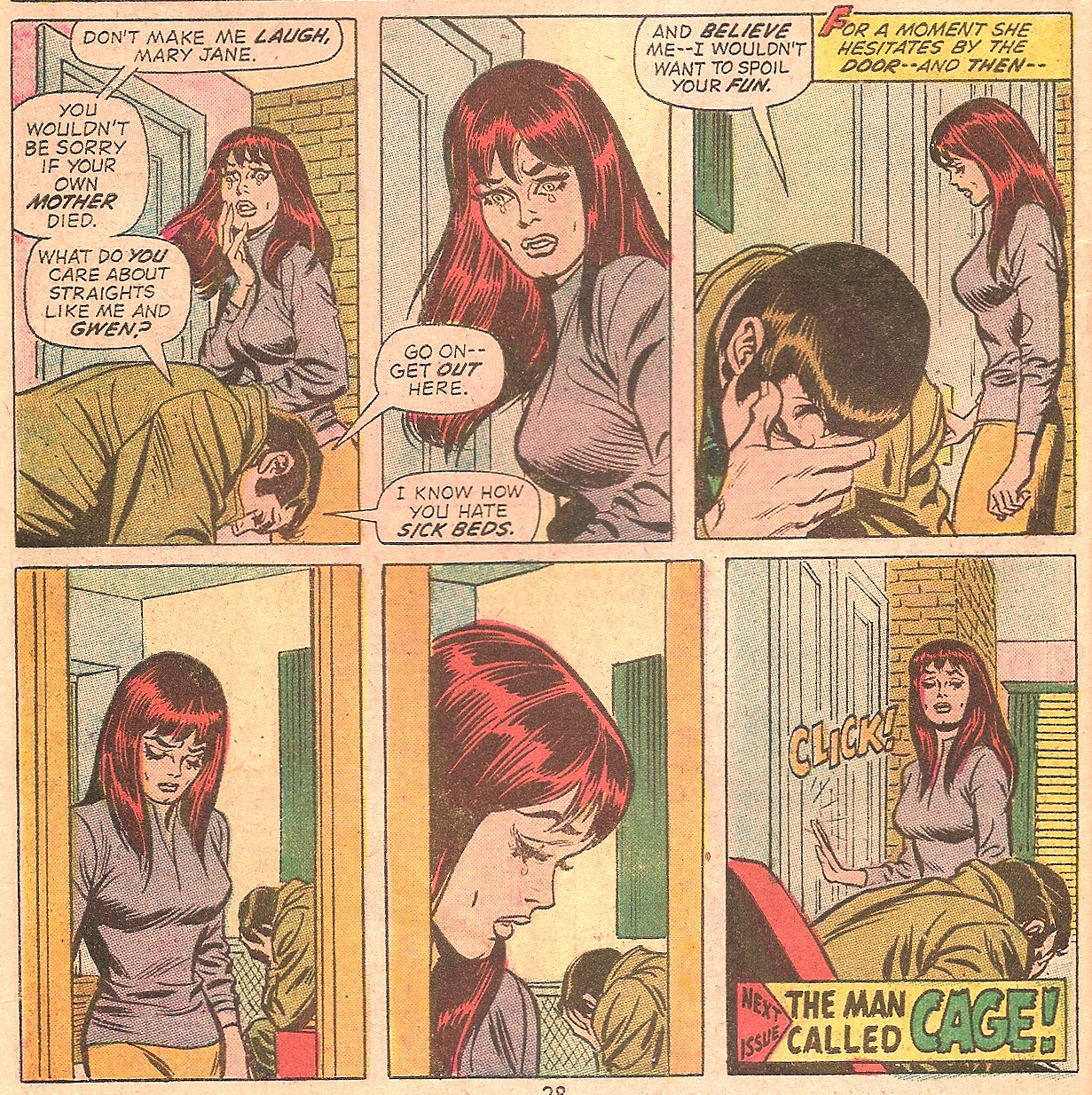 Sorry for the late entry. Since we’re about the hit the climactic final portion of Sam Raimi’s Spider-Man, I figured I would take a look back at one of the comics which provided the movie’s inspiration: The Amazing Spider-Man #122. The issue, cover-dated July 1973, was written by Gerry Conway, who was only 20 years old at the time. Twenty years old, and he was writing two of Marvel’s flagship titles: Spider-Man and Fantastic Four. So jealous. Pencils were by Gil Kane, inked by John Romita and Tony Mortellaro.
Sorry for the late entry. Since we’re about the hit the climactic final portion of Sam Raimi’s Spider-Man, I figured I would take a look back at one of the comics which provided the movie’s inspiration: The Amazing Spider-Man #122. The issue, cover-dated July 1973, was written by Gerry Conway, who was only 20 years old at the time. Twenty years old, and he was writing two of Marvel’s flagship titles: Spider-Man and Fantastic Four. So jealous. Pencils were by Gil Kane, inked by John Romita and Tony Mortellaro.
The previous issue was one of the most famous single issues in Spider-Man’s history: the death of Gwen Stacy. Spidey’s arch-foe the Green Goblin, who knew Spider-Man’s secret identity, had kidnapped true love Gwen in order to lure Spider-Man into a fatal confrontation atop the Brooklyn Bridge. When the Green Goblin flung Gwen off the bridge, Spider-Man stopped her fall with his web-shooter. However, the sudden stop caused her neck to snap, and she died.
As issue #122 opens, Spider-Man cradles Gwen’s dead body and swears vengeance on a gloating Goblin. Spider-Man uses his agility to dodge the Goblin’s attacks, then leaps upon his enemy’s back to deliver a righteous beatdown.
The Goblin manages to shake Spidey off and flees. Spider-Man then sees emergency personnel approaching Gwen’s body and leaps down to stop them. He furiously demands they leave her in peace. We then get a couple of large Gil Kane flashback-montage panels: one depicting Peter Parker’s history with Gwen and the other showing Spider-Man as the force keeping them apart.
When the ambulance arrives, Spider-Man says that she’s already dead, “and Spider-Man killed her.” The cops, not having seen the montage panels, take this as a confession of guilt, but Spider-Man shakes them off and escapes. He changes to his civilian clothes and heads to Norman Osborn’s townhouse for a final confrontation, but Osborn is not there. Instead, Peter finds best friend Harry Osborn tripping on LSD. It’s not a good trip. A terrified Harry begs Peter to stay with him, but Peter’s set on revenge and decides Harry is “no use to me at all.” Even in his shocked state, Peter realizes he’s being a dick, but decides that helping a friend vs. revenge is “not much of a contest” and leaves Harry alone. Damn, that’s cold.
Peter’s next move is to change back to Spider-Man and get Robbie Robertson, city editor of the Daily Bugle, to help him track Norman Osborn down. Before Spidey can leave to complete his revenge, J. Jonah Jameson bursts in to denounce him, leading to a moment that was adapted into the movie, albeit in a different context.
Spider-Man heads off to a warehouse recently purchased by Norman Osborn, where he is ambushed by the Green Goblin. Spider-Man fights with a rage and ruthlessness that he has never shown before, stomping the Goblin’s glider to disable it before pounding the Goblin to a pulp. He comes to his senses before killing him, however, and decides to turn the Goblin over to the police instead. However, the Goblin, sensing an opening, activates a remote control which flies his damaged glider directly at Spider-Man’s unprotected back.
This is a very common trope: the villain who dies by his own misadventure when the hero refuses to kill him. Story logic dictates that the villain must die, having committed acts too heinous to forgive. However, that same logic demands that our hero not be the one to kill him, since the hero’s hands need to stay clean. The one really unique and courageous thing that happens here is that, instead of the villain plunging to his doom out of sight (possibly to survive and return), here we actually see the villain’s body and so have proof of death. The Green Goblin would return in a little over a year, but this time, it would be mentally unbalanced son Harry Osborn wearing the costume.
Having achieved his revenge on one of his greatest foes, Spider-Man reflects that he doesn’t feel any better. He heads home, where he finds Mary Jane Watson waiting for him. In his sorrow, he treats her like a total dick.
Mary Jane had until this time been Veronica to Gwen Stacy’s Betty, the bad girl tempting Peter away from the good. Peter had ultimately chosen Gwen, while Mary Jane dated Harry Osborn off and on. But starting right here, Mary Jane took the first step of becoming the central woman in Peter Parker’s life, ultimately marrying him. By the time that Raimi’s film went into production, she was such a central character that they decided to simply write her in as the girl Peter had always loved.










